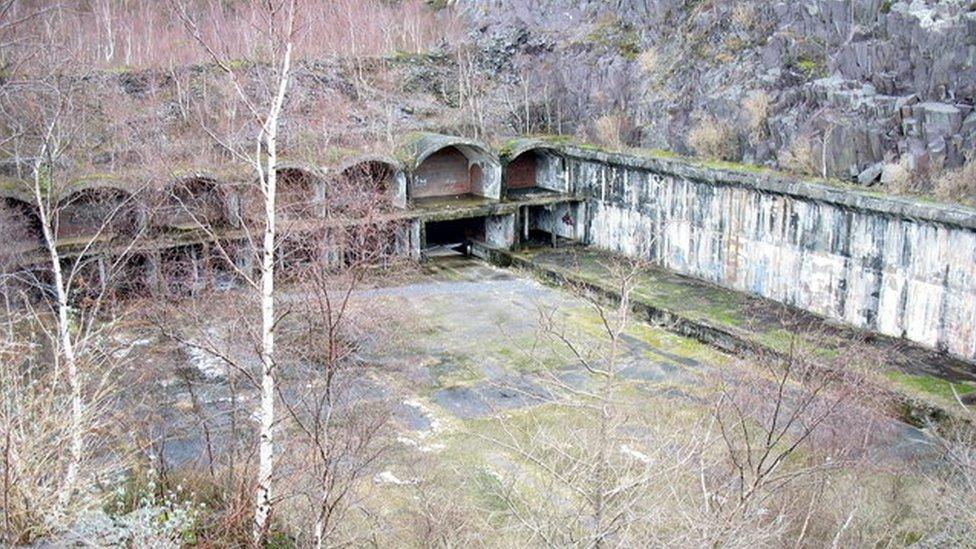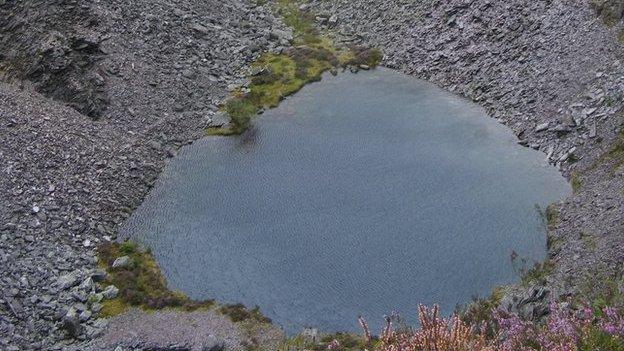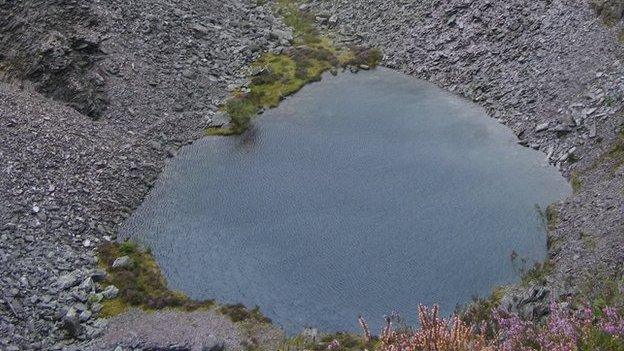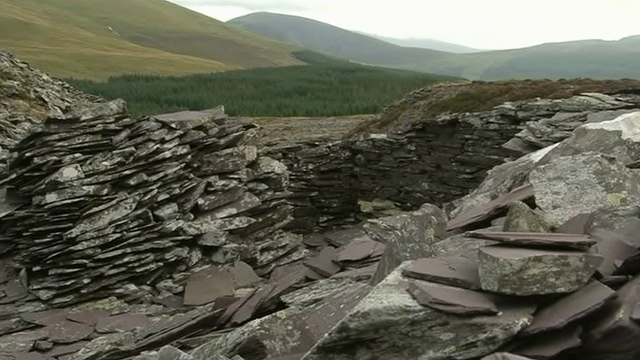WW2 nerve gas fears for Snowdonia hydro project
- Published

The former bomb store at Glyn Rhonwy, Llanberis
Campaigners opposed to a planned hydro-electric pumping station in Snowdonia say the site could be contaminated by World War Two nerve gas.
Part of the area at Llanberis in Gwynedd was home to a former RAF ammunitions store that was cleared in the 1970s.
A report for the developers suggests some unexploded munitions could remain buried in the former quarry.
But it said German nerve gas was removed and destroyed decades ago.
The power company Snowdonia Pump Hydro (SPH) want to use the old Glyn Rhonwy quarry as the site of a 600 MWh pumped electricity storage facility.
Those proposals are now being considered by the UK's Planning Inspectorate.
However, opponents of the scheme in the area have concerns over possible contamination at the Glyn Rhonwy workings.
The slate quarry was used as a secret munitions store during WW2, and later it was used to dispose of old and surplus bombs, bullets and grenades.
Thousands of tonnes of weapons ended up in quarry pits there, prompting a massive RAF clean-up operation that only ended in the mid-1970s.

One of the pools at the disused Glyn Rhonwy quarry
The 'Concerned about Glyn Rhonwy, external' group said they believed that chemical weapons may have also been dumped or buried at the site..
A consultant's report confirmed that 70,000 German tabun nerve gas shells seized following WW2 were held at the Llanberis quarry for a short time.
They were later moved to another facility near Caernarfon, and eventually dumped at sea.
SPH commissioned consultants Zetica to examine issues surrounding unexploded munitions at the site, as part of the planning process.
"Nobody takes this issue lightly," stressed a spokesman for the hydro power company.
"We rely on the information in the Zetica report. It confirms that the German tabun bombs were held for a short time in a secure area at Glyn Rhonwy. There is no evidence that they were stored in any other area."
The consultants stated that an official UK board of inquiry in the 1960s found "all German chemical weapons appeared to have been successfully removed from RAF Llanberis".
Toxic residue?
But the Glyn Rhonwy campaigners have insisted that there can be no guarantees that every single tabun shell was removed.
"We think there is at least one discarded tabun bomb on the site," said Jeff Taylor, from the campaign group.
He said that was based on documents uncovered in an archive relating to the quarry, which showed images of tabun bombs in Germany, and what appears to be the case of a similar bomb lying in a slate rock crevice.
"It is circumstantial evidence, but it is pretty damaging circumstantial evidence," argued Mr Taylor.

Chemist Dr Dave Peskett, who has carried out research on the issue for the campaign group, said he had seen documents suggesting discarded mustard gas shells had also been dumped at the quarry in the past.
The allegation is also disputed.
But Dr Peskett added: "It is not just the munitions that are the issue here. There's a huge pile of toxic residue there.
"Someone has to come in and remediate that site before any development takes place."
The spokesman for SPH said tests had been carried out on water samples in the quarry in both 2012 and 2015, and no contamination was found.
They added that "in the unlikely event" that unexploded ordnance was uncovered at Glyn Rhonwy, it would be dealt with in a "rigorous" process.
"It will ensure the safety of the people and the environment," said the official.
BBC Wales has asked the Ministry of Defence to respond to concerns surrounding the site.
However, a freedom of information request for details regarding the German nerve gas at Llanberis by the Concerned group was rejected stating that "release of the information would enable ill-disposed persons or organisations to act against the national interest, and that therefore on balance the information should be withheld".
- Published18 July 2015

- Published2 September 2013
